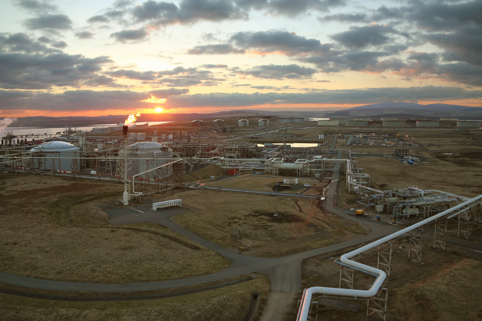Shetland - Britain’s rocky sub-arctic outpost - is, according to the office of national statistics, “the happiest place in the UK”. And visiting the island this week, it was easy to see how it has earned that distinction.
Amiable locals talk of an idyllic existence that is uncomplicated by the stresses of the mainland, and enriched by stunning scenery, great food, good music, and, of course, puffins.
And while the Island’s winters - when the sun only makes the most fleeting appearance - must be hard, the long summer nights are something to behold. Dangerous indeed for a thirsty journalist accustomed to the helpful prod of darkness to know when to head home and get some sleep.

The contentedness of Shetland’s population also owes much to an economy - largely based on fishing and oil - that has grown steadily since the 1970s. Indeed, in 2011 it topped the £1bn mark for the first time. Not bad for an island of just over 23,000 people.
Interestingly, this growth has continued despite a decline in output in recent years at Shetland’s biggest private sector employer, BP’s Sullom Voe facility, one of the largest oil and gas terminals in Europe . But, as The Engineer discovered this week, this could all be about to change.
Initially built to service the oil fields to the east of Shetland, Sullom Voe received its first oil though the Ninian and Brent pipelines in 1978. At its peak it was handling 1.5 million barrels of crude oil a day, and was responsible for a third of the UK’s oil.
As the flow from the fields east of Shetland has dwindled, the facility has declined and not so long ago there were even mutterings that it could be shut down. But all this changed when the scale of the reserves beneath the waters West of Shetland - the so-called “atlantic frontier” - became apparent.
Exploration of the West of Shetland area began in the 1970s, but interest tailed off in the face of the challenges presented by the area’s complex geology, deep water, and harsh conditions. However, recent advances in technologies such as seismic mapping, horizontal drilling and enhanced oil recovery are now making these resources accessible and economical, and the prize could be huge.

In its first oil and gas analytical bulletin, published earlier this year, the Scottish government predicted a renewed oil boom in the region, partly driven by the scale of the reserves West of Shetland. And with BP’s Clair oilfield alone thought to contain eight billion barrels of oil, many analysts believe that the area could eventually overtake the North Sea as the UK’s biggest oil producing region.
Clearly, Sullom Voe is perfectly positioned to make the make the most of this major resource and BP is now making a series of major investments that it says could keep the facility open until at least 2050. It’s a huge relief for those who depend on the terminal for a livelihood, and - despite some post-Deepwater Horizon jitters - seems to be generally viewed as good news for Shetland.
But what’s happening at the terminal is also a striking reminder of how the development of technology is leading to a constant revaluation of the scale of oil and gas reserves around the world.
To many, UK oil and gas is an industry in decline: with the easy oil now long gone, the high cost and risk of tapping into harder to reach reserves, mean that we must now look elsewhere for energy security. But as the current activity West of Shetland demonstrates, there’s plenty of life still left in this critical sector.




Glasgow trial explores AR cues for autonomous road safety
They've ploughed into a few vulnerable road users in the past. Making that less likely will make it spectacularly easy to stop the traffic for...